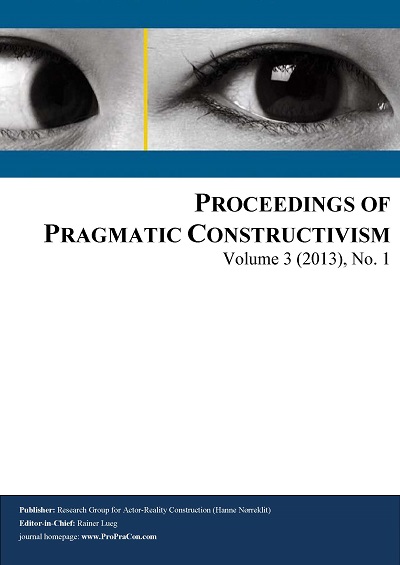Understanding performance measurement in public organization under pragmatic constructivism
DOI:
https://doi.org/10.7146/propracon.v3i1.16683Keywords:
Performance measurement, public services, pragmatic constructivismAbstract
The aim of this paper is twofold. Firstly to explore how a constructivist pragmatic approach may be applied to understand critical aspects of performance measurement in a public organization. And secondly, to contribute in proposing some effective characteristics of the potential PMS in the same setting. To this aims we analyze how different topoi may cohabit in a Regional Authority. This topic is particular important because the convergence of different topoi is crucial for the achievement of common organizational visions and to achieve organizational goals. The investigation of topoi was supported by interviews and focus groups that involved two organizational positions of an Italian Regional Authority: Top Managers and Middle Managers. These two organizational positions were chosen because they perform different types of activities and hence we can expect different topoi. The aim of interviews and focus group was to trace values, facts, logic and communication that form the topos driving the perception of performance. Interviews involved 7 Top Managers in charge of the 7 divisions of the Region and 15 Middle Managers in charge of departments. 17 focus groups involved 90 Middle Managers in charge of responsibility areas under each department.
Results underline that Top Managers and Middle Managers are driven by different topoi and have a different concept of performance at the base of their efforts: Top Managers require flexibility and professionalisms in their work, while Middle Managers require precise plans and rules. The result is that different topoi have different concepts of performance and that the performance of the Regional Authority and the contribution of organizational actors to the achievement of organizational goals result unclear and confused. Findings underline that the alignment of topoi is of utmost importance to the design of an effective PMS in the organization: increasing the communication between these two organizational levels may favor the convergence of the two topoi and increase the clarity of the Regional Authority performance goals and measures.Downloads
Published
How to Cite
Issue
Section
License
Previous and future use of the work
ProPraCon assumes the non-exclusive rights to publish and store the work of its authors, once they have consented to a publication. Since the rights to publish are non-exclusive, authors are free to re-use their work, e.g., to publish it in other media (as ProPraCon aims at publishing proceedings). Hence, it is explicitly allowed that works submitted to ProPraCon may be published in a somehow similar form in other media. Yet, submitting authors warrant that the work is not an infringement of any existing copyright and will indemnify the publisher against any breach of such warranty.
Permissions
By submitting work to ProPraCon, the authors declare that they have permission to use any content that has not been created by them. Specifically, when using tables, figures or excerpts of more than 400 words, it is expected that the authors…
- …obtain written permission of copyright for the use in print and electronic formats of any of their text, illustrations, graphics, or other material, in their work. This includes any minor adaptations.
- …acknowledge the original source in captions and in the reference list.





